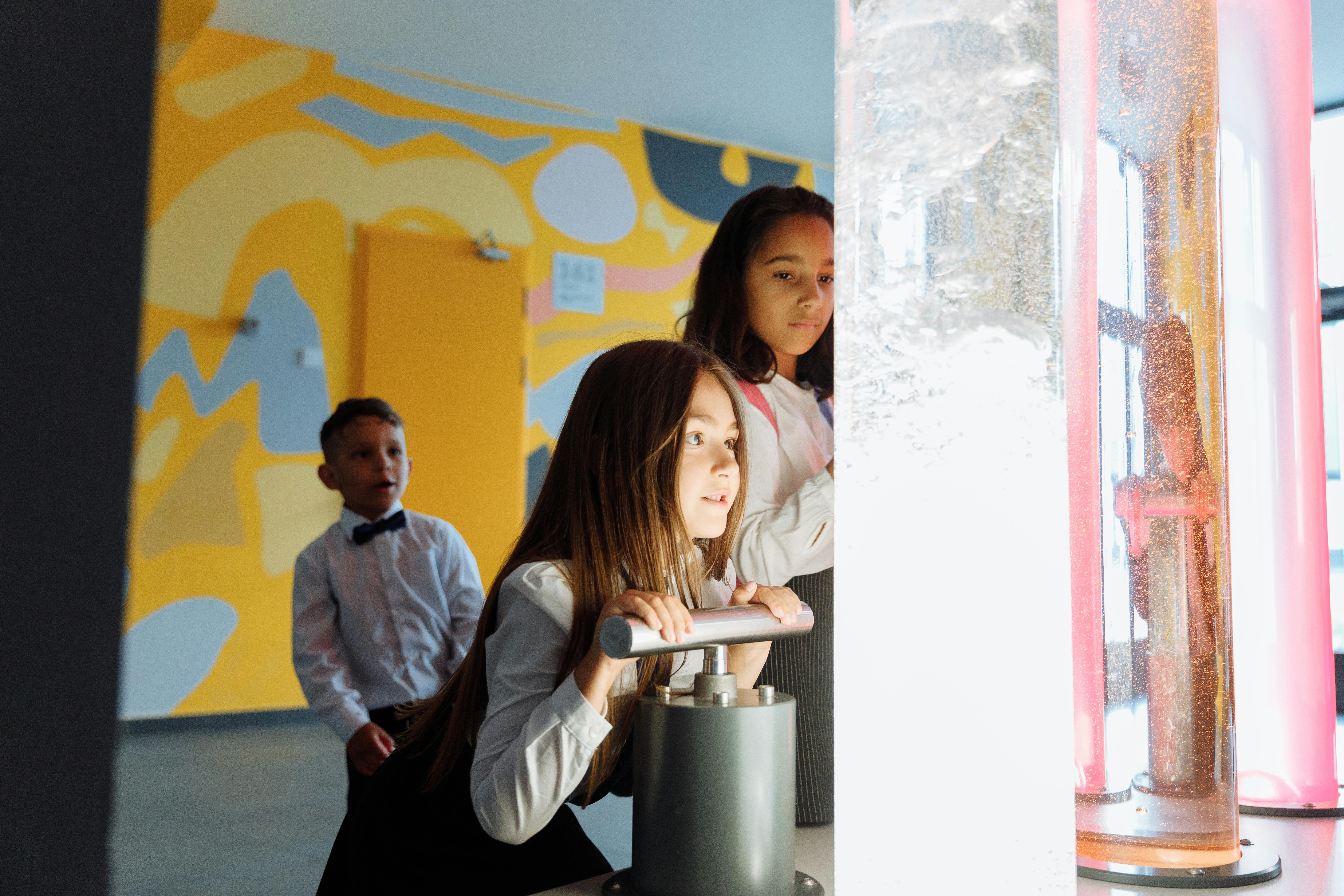As an affiliate, I earn from qualifying purchases, but this doesn't affect the reviews or recommendations—your trust is important to me!
Creating the Ultimate Spaghetti Bridge: A STEM Experiment Guide

Today, We're Making:
- - Spaghetti Bridge Building Challenge (STEM Experiment)
- - 'Across the Universe': A project where kids can create their own mini space rover using household items. On the given date, NASA is planning to launch some missions; this would make the project timely and educational. Kids can learn about different planets, missions, and engineering related to space exploration.
- - 'Race Against Time' Sundial: This project would involve kids making a sundial this day and tracking the movement of the sun. This is a fascinating way to teach them about Earth's rotation and the concept of time.
- - 'Water Cycle in a Bag': Kids can set up this experiment on the given date and observe the water cycle in action over the next few days, tracking the progress and noting down observations. They can learn about evaporation.
Spaghetti Bridge Building Challenge
Picture this - it's a rainy weekend, the kids are buzzing with energy, and you're on the search for an engaging, educational project to keep them entertained. What you need is a perfect blend of education, fun, and a pinch of DIY challenge!
The Solution
Enter the Spaghetti Bridge Building Challenge, a practical STEM experiment that has the potential to turn any ordinary kitchen table into a hub of scientific fascination. Not just a kids' experiment or a homeschooling resource, this creative activity explores the depths of engineering principles, transforming your humble pack of spaghetti into a bridge of learning.
Anyone can master
And most importantly, anyone can master the art of bridge construction. So, let's dive into the world of spaghetti bridges, and see how this fun, hands-on science project can help you create your own little engineers!
The Making of Your Spaghetti Bridge
Embarking on the Spaghetti Bridge Building Challenge (STEM Experiment) requires no more than a bag of dry spaghetti, some string, tape or glue, a ruler, and a good dose of imagination. First and foremost, we need to decipher one of the most fundamental engineering principles - the design of the bridge. Bridge design and construction transcend beyond a simple pasta craft. It's about understanding the delicate equilibrium between the size, form, and stabilizing factors that contribute to the strength of spaghetti.
While using spaghetti might seem unconventional, the best way to consider this is by viewing the pasta as mini beams. Bear in mind, however, that despite its size, spaghetti can be incredibly robust. Their tensile strength is the secret behind spaghetti bridges' surprising durability. Who would have thought pasta would make a sturdy classroom project, right?
Unveiling the Physics Behind the Fun
The Spaghetti Bridge Building Challenge (STEM Experiment) isn't merely a science project or just another educational project teaching kids experiment techniques; it delves deeper into the underlying physics. The strength of spaghetti is an attribute of physics. Exploring these attributes during this engineering challenge brings about the realization that physics isn't just confined to textbooks, it's a part of everyday life. Bridge construction can teach principles like tension and compression while introducing concepts such as load and support points.
Make this project an interactive learning resource by building bridges of different designs using the humble spaghetti and observing which design is the strongest. Is it a simple beam bridge, arch bridge, or a more complex suspension bridge? The fun part about this STEM experiment is that there's an element of trial and error (and much fun) as you iteratively test, adjust and improve your designs.
Bringing Science to Your Kitchen Table
What turns this pasta bridge challenge into an exciting homeschooling adventure is the fusion of hands-on activity and learning. For the young ones, this DIY Bridge might seem like a fun activity for a rainy day; for older kids, the Spaghetti Bridge Building Challenge serves as a rudimentary introduction to the fascinating world of engineering and physics.
Educators and parents alike praise the STEM experiment for its ability to engage kids' minds while allowing them to physically create and learn. This helps children visualise, assist and comprehend the intricacies of bridge design and construction. Interactions of this kind foster a deep-seated interest in STEM, turning a simple pasta craft into a doorway to future learning.
After all, who knows? The next civil engineer might be under your roof, and all they need is a bag of spaghetti to discover their hidden potential.

Spaghetti Bridge Building Challenge
So there you have it - a simple, yet superbly educational activity right at the convenience of your kitchen table.
Possibly the greatest brilliance of this Spaghetti Bridge Building Challenge is its capacity to transform an afternoon of engaged, fun-filled activity into a catalyst sparking a long-lasting love and passion for STEM learning.
As you watch your child's eyes light up with each successful bridge built, remember you're constructing much more than just a spaghetti bridge, you're building a foundation for a lifelong love of learning, exploration, and problem solving.
Not bad for an experiment that started with a bag of pasta, right? So grab your spaghetti packets and let's start bridging the gap between fun and learning today!

You May Also Like These:
'Across the Universe: DIY Mini Space Rover'
Ingredients:
- 1 empty, clean tissue box
- 4 plastic bottle caps
- 2 plastic straws
- 1 cardboard square (can be cut from a cereal box)
- A roll of duct tape
- A pack of colored markers
- A pair of scissors
Instructions:
Step 1:
Cut the plastic straws into 4 equal size pieces. These will function as the axles of the space rover.
Step 2:
Use the duct tape to connect two of the straw pieces to each side of the tissue box. Ensure the straws are parallel and evenly spaced so the rover will move straight.
Step 3:
Take the 4 bottle caps and slide them onto the ends of the straw pieces. These will function as the wheels of the space rover. Secure them in place using the duct tape.
Step 4:
Cut your cardboard square to match the top of your tissue box. This will serve as the platform of the rover where the instruments would be placed.
Step 5:
Use the duct tape to secure the cardboard platform onto the top of the tissue box.
Step 6:
The fun part: Decorate! Use your colored markers to decorate your space rover. Remember, it needs to look like it can withstand the harsh environment of the space!
Step 7:
Finally, send your mini space rover on its maiden voyage across the universe (aka your living room).
STEM Project: Build a Simple Robot Arm
Ingredients:
- 3-4 plastic syringes
- Plastic tubing
- POP sticks
- Hot glue and Glue gun
- A small ball (for testing)
Instructions:
-
Prepare the Syringes:
Take the plastic syringes and fill two of them with water. Make sure to keep one syringe empty. These will be used as the joints for the robot arm.
-
Create the Arm Structure:
Using POP sticks, create a basic arm structure with two sections (upper arm and forearm). Make sure each section is long enough to hold one syringe.
-
Attach the Syringes:
Attach one syringe to the end of each arm section using hot glue. The syringe filled with water represents a 'muscle', which will move the arm.
-
Connect the Syringes:
Using the plastic tubing, connect the two syringes filled with water to the empty syringe. This will allow you to control the movement of the arm using the empty syringe.
-
Test Your Robot Arm:
Now you can test your robot arm! By pushing or pulling the plunger on the empty syringe, you can control the movement of the arm. Try using the robot arm to pick up a small ball.
Note: Adults supervision is required when using a hot glue gun.
STEM Project Instructions: Building a Volcano
Materials Needed:- Baking Soda
- Vinegar
- Dish Soap
- Water
- Food Coloring (optional)
- Plastic Bottle
- Cardboard/Plastic Tray
- Play Doh or Clay
- First, place the plastic bottle in the center of the tray.
- Use the Play Doh or clay to build the volcano around the bottle. Make sure not to cover the bottle opening.
- Once your volcano is built, fill the bottle halfway with water.
- Add a few drops of dish soap to the water.
- If you want to add color to your volcano's eruption, add a few drops of food coloring.
- Add two tablespoons of baking soda to the mixture inside the bottle.
- When you are ready for your volcano to erupt, pour a quarter cup of vinegar into the bottle and quickly step back!
- Careful! The volcano eruption can be quite messy. It’s best to set up this activity outdoors or in a place that's easy to clean.
STEM Projects for Space Exploration
'Race Against Time' Sundial
Ingredients:- A straight stick
- Markers
- A wide and flat open space, with direct sunlight
- Find a spot that receives sunlight most of the day.
- Stick the straight stick into the ground at the chosen spot to cast a shadow.
- Mark the shadow of the stick with markers every hour on the hour to create the sundial.
- Throughout the day, the kids can check how the shadow's position has moved as time progresses, teaching them about Earth's rotation and the concept of time.
'Water Cycle in a Bag'
Ingredients:- A Ziplock bag
- Water
- Blue food coloring
- Duct tape
- A sunny window
- Fill a quarter of the Ziplock bag with water.
- Add a few drops of the food coloring to the water. Mix it well by gently shaking the bag.
- Seal the bag tightly using duct tape. Ensure the bag has some air trapped inside it to create humidity.
- Affix this bag on a sunny window.
- Over the next few days, observe how the water in the bag evaporates, condenses on the bag's inner surfaces, and falls back as 'rain', teaching kids about the water cycle in action.
Tracking Progress of Evaporation - A STEM Project
Introduction: This is a fun and easy STEM project that allows your child to learn about the process of evaporation. It helps in improving observation and analysis skills, while making learning about the scientific phenomenon of evaporation enjoyable.
Materials Needed:
- A clear glass or container
- Water
- A ruler
- Permanent marker
- Journal or notebook
Step-by-Step Instructions:
- Fill the Container: Fill the glass or container with water to a certain marked level. Use the permanent marker to mark the water level on the outside of the container.
- Place the Container: Place the container in a safe, undisturbed place where it can sit for a few days. Ensure the place gets sunlight and is not too humid.
- Measure Regularly: Use the ruler to measure the water level in the container once every day. Be consistent with the measuring time.
- Record Observations: Record the water level and any other observations in the journal. Important details include date, time, water level, and changes in weather.
- Analyse Data: After a week, look at the data collected. Plot a graph with dates on the x-axis and corresponding water levels on the y-axis to visualize the process of evaporation.
Concluding Thoughts:
This simple STEM project is a practical and interactive way for your child to understand the process of evaporation and the influence of environmental factors on it. It encourages curiosity, sharpens observational skills, and fosters an interest in science.











